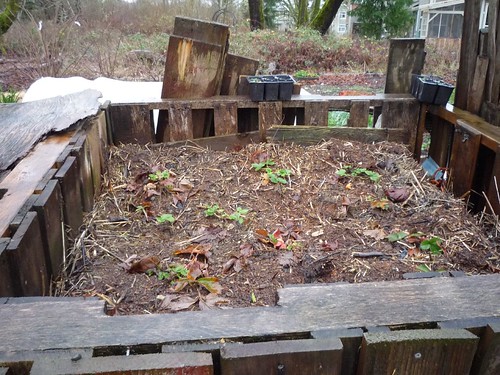
It’s the middle of winter but that doesn’t mean it’s too early or not a good time to think about your spring gardening chores. Composting is an excellent practice for young and old alike and easy for kids of almost all ages to help with at various levels.
There are as many composting systems as there are gardeners out there! From small space to large farms, gardeners have all sorts of creative ways to compost their waste. Which system is right for you and your family?
Here are some questions to ask yourself before starting your compost project, and a list of some of the more common systems. This should help you determine what the best system is for your situation.
How much do you compost?
Do you have a lot of acreage? Do you mow and rake a large area and end up with a lot of lawn waste? Or do you basically want a system to compost kitchen scraps? Consider how much waste you generate before deciding on a system.
How big an area do you want to enrich with compost?
Whether you have a small garden, an indoor garden, or multiple, large gardens, they all need compost. Take a moment to calculate how much area you are going to be enriching with compost before beginning, so you don’t end up with too much or too little compost (although your neighbors may appreciate any extra you have!).
Here are some of the compost systems available:
1. Pile it up
The least complicated compost system is simply a pile on the ground in a location that receives a balance of sun and shade. Simply start with yard clippings and add kitchen scraps, and use a pitchfork or shovel to keep it heaped so that it will decompose. This kind of compost will need to be turned by hand. The open pile system may be a problem in certain cities or neighborhoods, so check with your local zoning officials to find out if this kind of system is allowed.
2. An open bin
Also a fairly simple method, an open bin can be constructed with wood and wire netting. This is a good way to use scrap wood such as old packing pallets. Such a bin can have a slatted wood bottom, or simply sit on the ground surrounded by the wood and wire structure. You don’t even need wood scraps; an open bin can consist of a cross section of perforated metal sheeting, or an upright, cylindrical loop of wire. Again, this is a potentially problematic system for those who live in cities or suburbs with close neighbors.
3. A closed compost bin
These look like large, plastic barrels, and that is essentially what they are. Most municipalities accept this kind of composting system, and your local waste management authority should have information about where to obtain such a bin. In fact, some waste management authorities have such bins available for sale. There are quite of few styles and varieties of commercial bins available, including some that can be turned from the outside. Generally speaking, those offered by municipalities are less expensive that those sold at garden centers or online.
4. A worm bin
This is a method of compost that can be done indoors in a garage or basement. Sometimes called vermicomposting, a worm bin uses the natural habits of worms to break down kitchen and yard waste into usable compost. You can purchase a worm bin or make your own – just be sure it is waterproof, has air holes and is opaque (worms like it dark).




1 thought on “How to Choose the Right Composting System for Your Home”